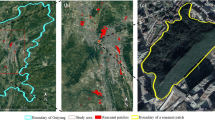Summary
Most species of Panamanian lowland forest birds specialize on leaf undersurfaces when hunting foliage insects. The few species of leaf surface generalists and leaf upper surface specialists are omnivorous gleaners. We estimate that while over 90% of the avian understory insectivory is directed towards leaf undersurfaces, only 50% of canopy foliage insectivory is directed towards the undersides of leaves. In the low understory we found 70–80% of the arthropods on leaf undersides. The excess use of leaf-bottoms by understory birds may be a result of their greater visibility. It is hypothesized that less proficient insectivores are unable to take advantage of the greater effective density of underleaf insects because they can only efficiently attack the closest leaf surfaces; these closest surfaces will usually be the leaf tops from the branch on which the bird is perched. Alternatively, leaf-top specialists may have special foraging adaptations for overcoming the disadvantages of leaf-top foraging. These adaptations may involve attack behavior (Tachyphonus luctuosus) or searching behavior (Dacnis cayana). Dacnis often used leaf damage as a foraging cue; this may be the first report of a bird using leaf damage for searching for insects. The greater use of leaf upper surfaces by canopy birds may be influenced by four factors: greater seasonality of insects in the canopy favoring omnivores which may be less efficient insectivores; more insects on leaf tops; fewer planar leaf arrangements in canopy plants; or the greater visibility of leaf upper surfaces of the outer shell of foliage of massive trees. Based on the greater number of arthropods on leaf bottoms in the dry season, the higher abundance of smaller insects on leaf bottoms, as well as the greater proportion of insects on leaf tops at cooler higher elevations, we suggest that arthropods prefer leaf bottoms in tropical areas for physiological, not predator avoidance reasons.
Similar content being viewed by others
References
Cody, M.L.: Competition and the structure of bird communities. Monogr. Popul. Biol. No. 7 Princeton, N.J.: Princeton Univ. Press 1974
Croat, T.B.: Flora of Barro Colorado Island. Stanford, Calif.: Stanford Univ. Press 1978
Emlen, J.T.: The avifauna of Grand Bahama Island. A.O.U. Ornithological Monogr. No. 12 (1978)
Gale, N.: A checklist of the birds of Pipeline Road area. Balboa, Canal Zone: Panama Canal Zone Audubon Society 1978
Heinrich, B.: Foraging strategies of caterpillars, leaf damage and possible predator avoidance strategies. Oecologia 42, 325–339 (1979)
Jackson, J.A.: Tree surfaces as foraging substrates for insectivorous birds. In: The role of insectivorous birds in forest ecosystems (J.G. Dickson, ed.), pp. 69–93. New York: Academic Press 1979
Karr, J.R.: Structure of avain communities in selected Panama and Illinois habitats. Ecol. Monogr. 41, 207–233 (1971)
Karr, J.R.: Within- and between avian diversity in African and Neotropical lowland habitats. Ecol. Monogr. 46, 457–481 (1976a)
Karr, J.R.: Seasonality, resource availability, and community diversity in tropical bird communities. Am. Nat. 110, 973–994 (1976b)
Karr, J.R.: On the relative abundance of north temperate migrants in tropical habitats. Wilson Bull. 88, 443–458 (1976c)
Orians, G.: The number of bird species in some tropical forests. Ecology 50, 783–801 (1969)
Pearson, D.: The relation of foliage complexity to ecologic diversity of three Amazonian bird communities. Condor 77, 453–566 (1975)
Root, R.B.: The niche exploitation pattern of the Blue-gray Gnatcatcher. Ecol. Monogr. 37, 317–350 (1967)
Skutch, A.F.: Life histories of Central American birds. Pt. III. Pac. Coast Avifauna No. 35 (1969)
Snow, B.K., Snow, D.W.: The feeding ecology of tanagers and honeycreepers in Trinidad. Auk 88, 291–322 (1971)
Snow, D.W.: Observations on the Purple-throated Fruitcrow in Guyana. Living Bird 10, 5–17 (1971)
Williamson, P.: Feeding ecology of Red-eyed Vireo and associated foliage-gleaning birds. Ecol. Monogr. 41, 129–152 (1971)
Willis, E.O.: On the role of migrant birds at swarms of army ants. Living Bird 5, 187–231 (1966)
Willis, E.O., Oniki, Y.: The ecology and behavior of the Chestnutbacked Antbird Myrmeciza exsul on Barro Colorado Island, Panama. Condor 74, 87–101 (1972)
Willis, E.O., Eisenmann, E.S.: An annotated Checklist of the birds of Barro Colorado Island. Smithson. Contrib. Zool. No. 292. Washington, D.C.: Smithsonian Press 1979
Windsor, D.: The feeding activities of tropical insect herbivores on some deciduous forest legumes. In: The ecology of arboreal folivores (G.G. Montgomerey, ed.), pp. 111–115. Washington, D.C.: Smithsonian Press 1979
Author information
Authors and Affiliations
Rights and permissions
About this article
Cite this article
Greenberg, R., Gradwohl, J. Leaf surface specializations of birds and Arthropods in a Panamanian forest. Oecologia 46, 115–124 (1980). https://doi.org/10.1007/BF00346975
Received:
Issue Date:
DOI: https://doi.org/10.1007/BF00346975




